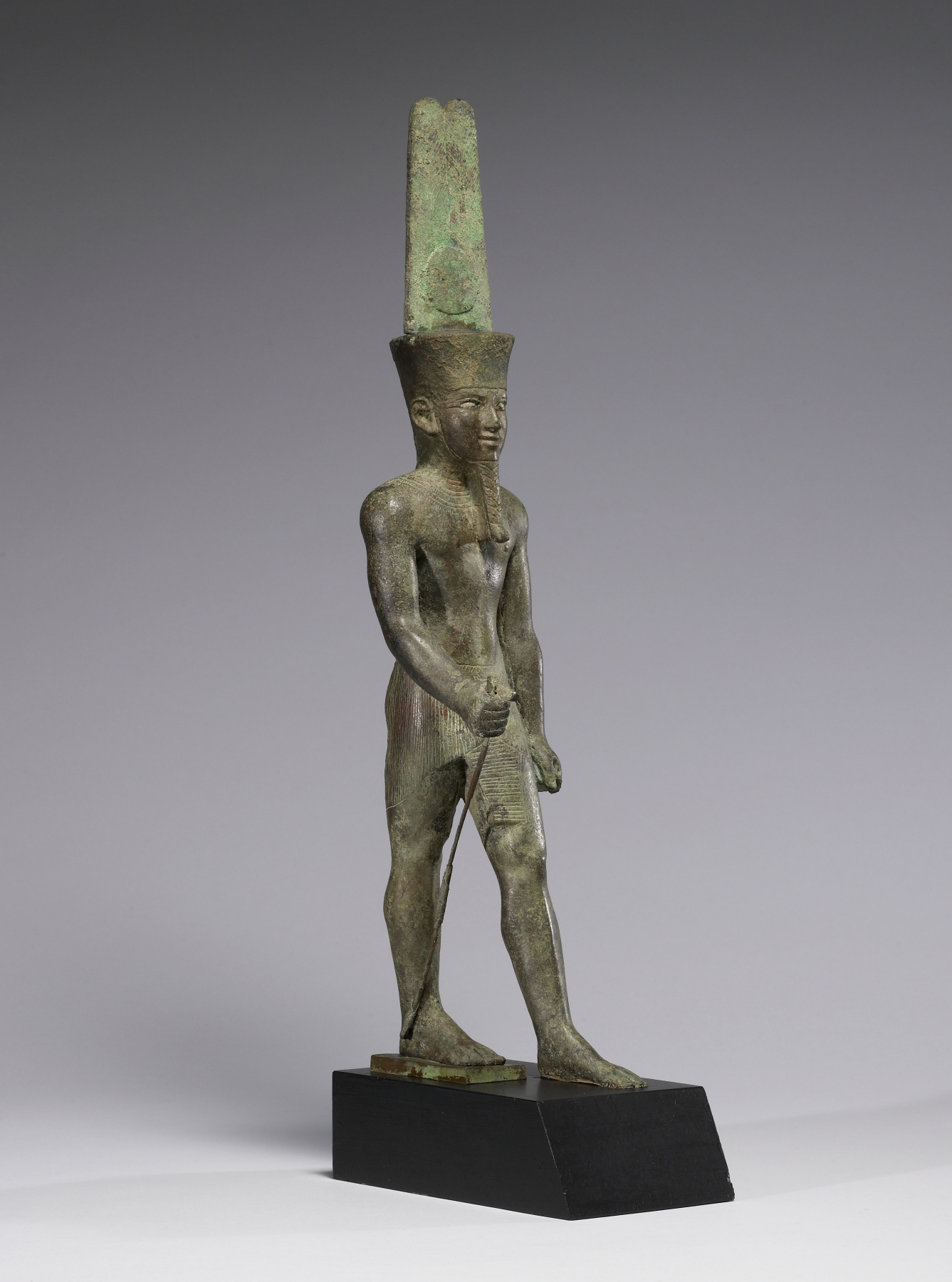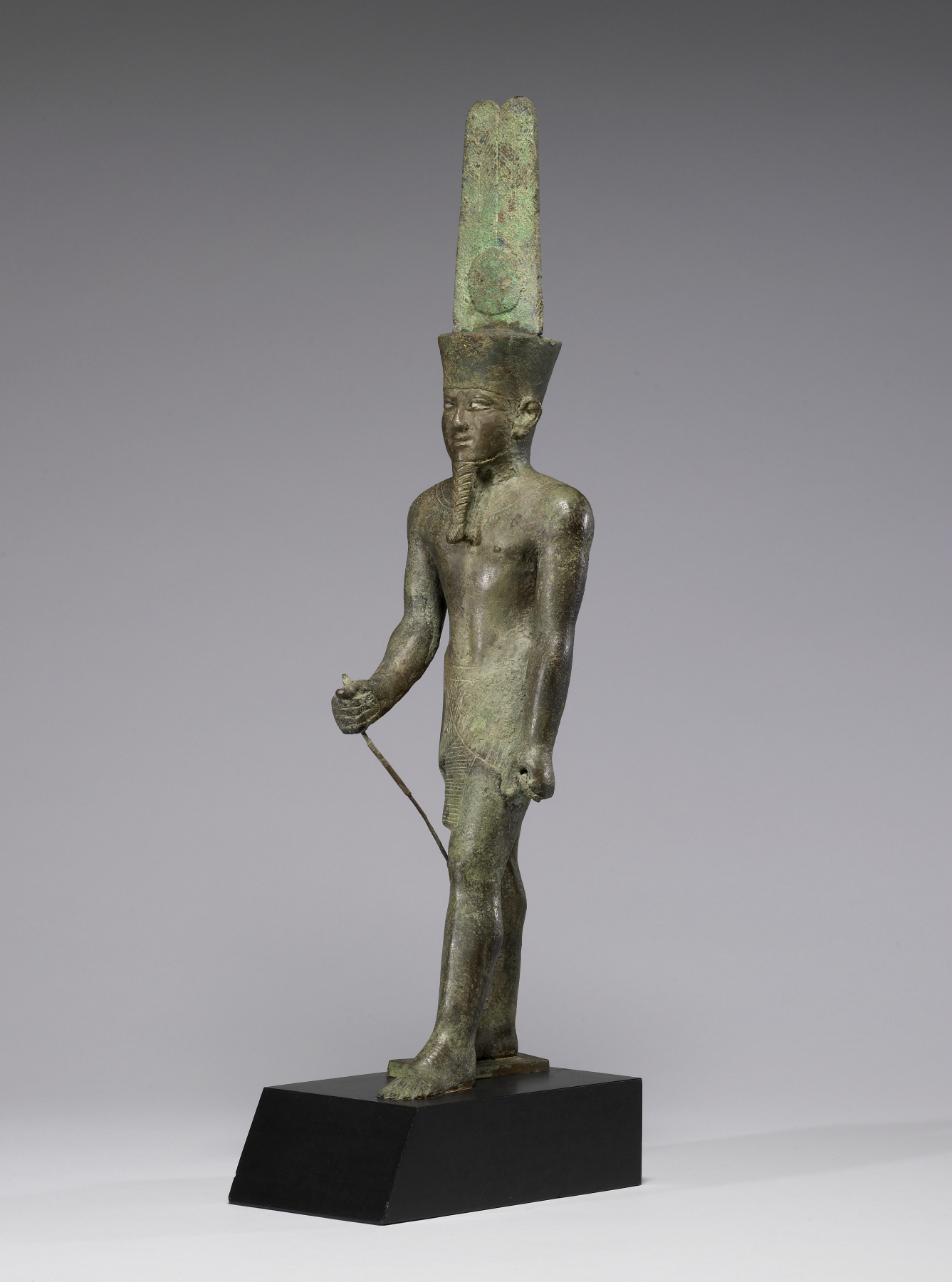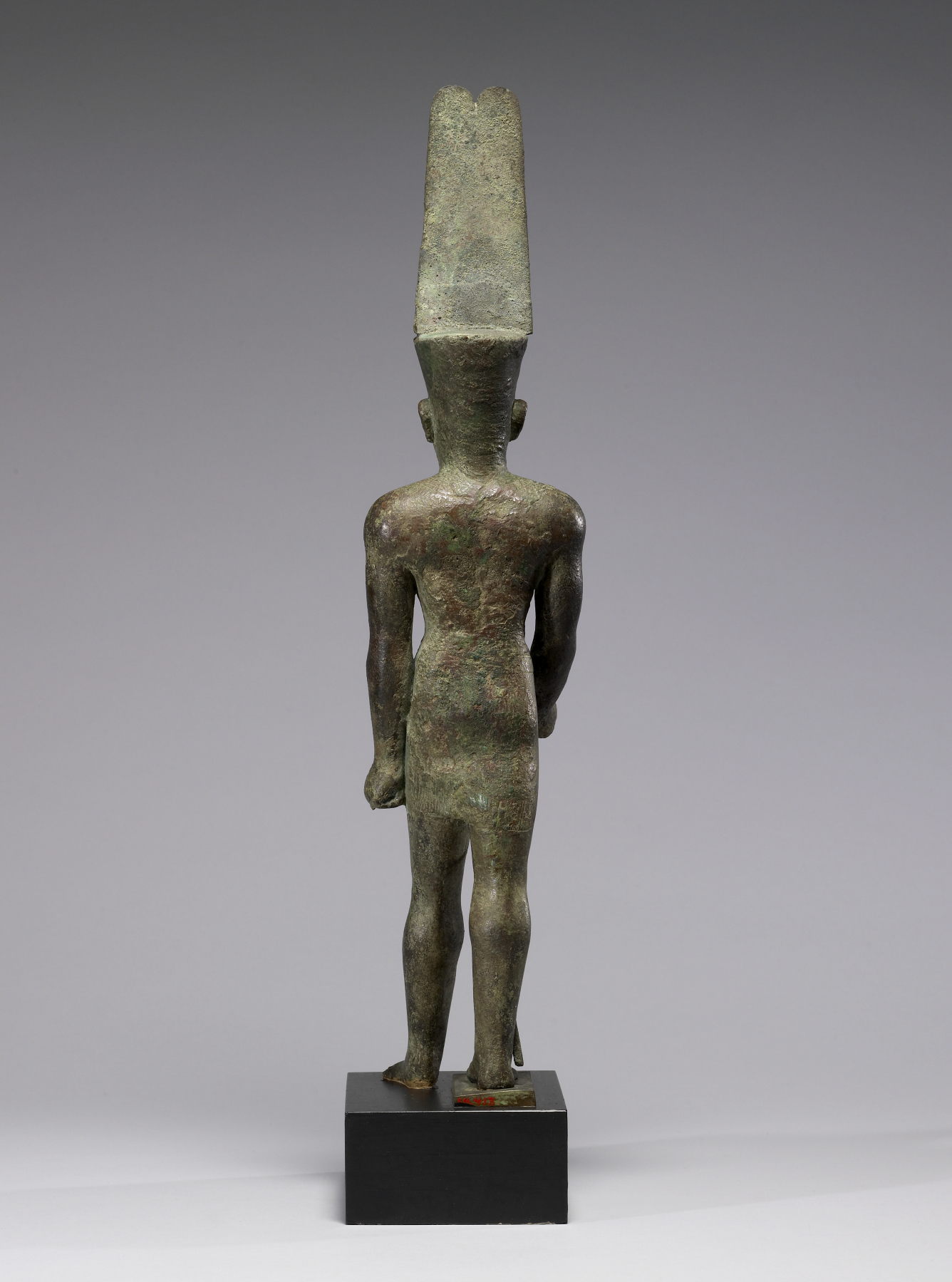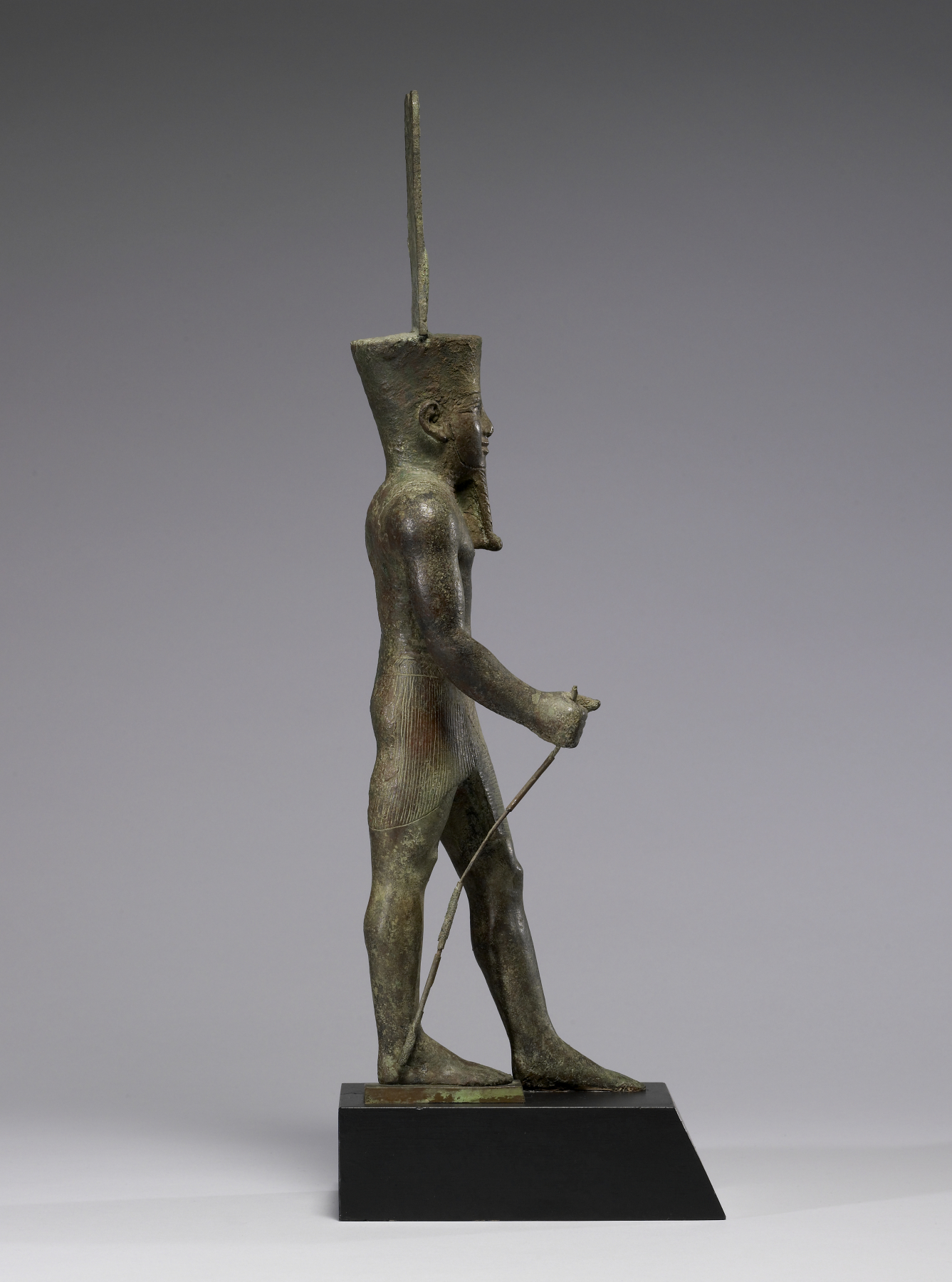Statue of Amun-Re
(Ancient Egypt and Nubia )
Amun was one of the most important deities in ancient Egypt. He was worshiped at Thebes (in southern Egypt) from the beginning of the Middle Kingdom (2046 BC). The Egyptians considered him to be "King of the Gods" and divine father of the pharaoh. He was also worshiped in Nubia and was the principal god of the Kushite empire (in present-day Sudan).
The style of the figure clarifies that it was made when the Kushites ruled both Egypt and Nubia. The god wears his characteristic feather-crown combined with the solar disk of the sun-god Re. The attributes he would originally have held were probably the symbols for prosperity ("was") and life ("ankh").
Provenance
Provenance (from the French provenir, 'to come from/forth') is the chronology of the ownership, custody, or location of a historical object. Learn more about provenance at the Walters.
Dikran Kelekian, New York and Paris [date and mode of acquisition unknown]; Henry Walters, Baltimore, 1911, by purchase; Walters Art Museum, 1931, by bequest.
Exhibitions
| 2014-2015 | Die Entstehung der Welt. Ägyptens letzter Schöpfungsmythos (The Origin of the World. Egypt’s Last Creation Myth). Roemer- und Pelizaeus- Museum, Hildesheim; Kunsthalle Leoben, Leoben. |
| 2013-2014 | Egypt’s Mysterious Book of the Faiyum. The Walters Art Museum, Baltimore. |
Geographies
Egypt, Karnak (Place of Origin)
Measurements
H: 19 1/8 × W: 4 1/8 × D: 5 5/16 in. (48.5 × 10.5 × 13.5 cm); H with Base: 21 1/16 × W: 4 1/8 × D: 7 1/8 in. (53.5 × 10.5 × 18.1 cm); Base H: 2 1/16 × W:4 1/8 × D: 7 1/8 in. (5.3 × 10.4 × 18.1 cm)
Credit Line
Acquired by Henry Walters, 1911
Location in Museum
Not on view
Accession Number
In libraries, galleries, museums, and archives, an accession number is a unique identifier assigned to each object in the collection.
In libraries, galleries, museums, and archives, an accession number is a unique identifier assigned to each object in the collection.
54.413












